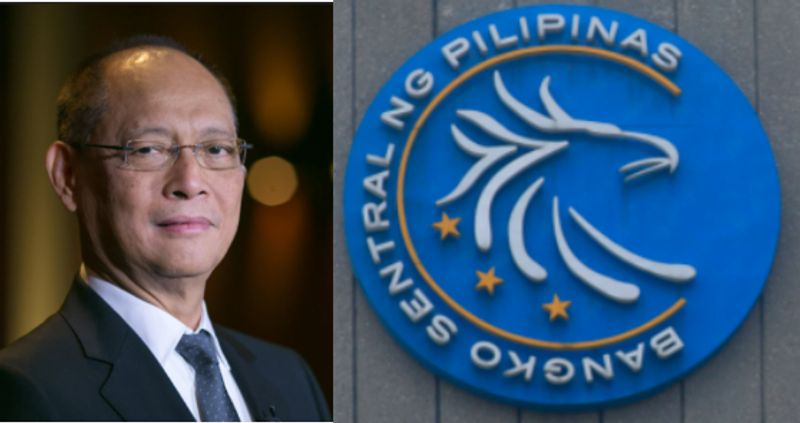Price increases for major commodities slowed down slightly last month, pulled down by the lower annual rate of increases in the indices of transport and food and non-alcoholic products.
Data from the Philippine Statistics Authority showed inflation eased to 4.8 percent in September from 4.9 percent in August 2021.
This brings the country’s average inflation from January to September 2021 to 4.5 percent, above the government’s full-year target range of between 2 and 4 percent.
Excluding selected food and energy items, core inflation remained at 3.3 percent.
PSA said the slower pace in the overall inflation was mainly due to the “lower annual rate of increment in the transport index at 5.2 percent during the month, from 7.2 percent in the previous month.”
Annual upticks also slowed down in the indices of food and non-alcoholic beverages; furnishing, household equipment, and routine maintenance of the house; communication; and education.
The September inflation, however, was at the low end of the Bangko Sentral ng Pilipinas’ forecast range of between 4.8 and 5.6 percent.
Benjamin Diokno, BSP governor, said inflation could remain elevated in the near term before decelerating to within the target range of 2.0 to 4.0 percent by the end of the year.
“Inflation is projected to settle close to the midpoint of the target range in 2022 and 2023 with inflation expectations remaining firmly anchored to the target,” Diokno said.
He said the recent inflation uptick is expected to be driven largely by supply side factors related to weather disruptions, global oil prospects, and continued impact of the African swine fever (ASF).
“The risks to the inflation outlook remain tilted towards the upside for the remaining months of 2021, but remain broadly balanced for 2022 and 2023. Upside risks may come from pressures on world commodity prices, effects of weather disturbances, and prolonged recovery from the ASF outbreak. Downside risks are seen from the spread of more contagious Covid-19 variants and weaker-than-expected global growth prospects,” Diokno said.
Karl Kendrick Chua, socioeconomic planning secretary, said the lower price increases for the food index was mainly due to the government’s “proactive implementation” of various executive orders on importation of commodities.
“The government is continuously accelerating and calibrating its implementation so we can further lower pork prices towards their pre-ASF level. The government will continue to proactively monitor the supply and demand of these commodities to ensure access to affordable food amid the pandemic,” Chua said.
The government adopted EOs 133 and 134 in May 2021 to help increase the supply of pork in the country amid its shortage due to the ASF. These interventions increased the minimum access volume for imported pork, and imposed a temporary reduction of pork tariffs, respectively.
To help augment the fish supply in the coming closed fishing season, the Department of Agriculture issued a Certificate of Necessity to Import with a maximum importable volume of 60,000 metric tons of small pelagic fish such as galunggong, mackerel, and bonito for wet markets.
Nicholas Mapa, ING Bank Senior Economist, said the latest inflation reading gives the BSP “a little more space to maintain its accommodative stance” to be followed by “a well-timed gradual policy normalization by the second quarter of next year.”
IThe policymaking Monetary Board last month decided to keep the key rates of the BSP unchanged for the seventh straight session.
The interest rate on the BSP’s overnight reverse repurchase facility remains at 2.0 percent.
The interest rates on the overnight deposit and lending facilities were likewise kept at 1.5 percent and 2.5 percent, respectively.
“Pressure has been building on the BSP to hike prematurely but the surprise inflation print helps the central bank justify its current stance. BSP has indicated its preference to give the economy a little more breathing room to aid in the recovery until clear signs of a recovery are evident,” Mapa said.
Mapa said with the economy still mired deep in a recession, “the BSP would hope to keep policy support for just a bit longer to help provide enough lift for escape velocity from the prolonged downturn.”
“Given the fragility of the recovery, BSP has justified looking through the inflation target breach citing the cost side nature of the price spikes. With global inflation becoming more persistent, BSP remains cognizant of the global dynamics and will likely take these into consideration in its policy decision,” Mapa said.
Diokno maintained that the supply side shocks are best addressed by timely non-monetary policy interventions that could ease domestic supply constraints.
“The return of inflation to the target range is highly contingent on the successful implementation of these supply measures,” Diokno said.





